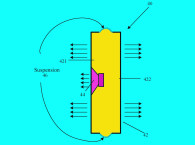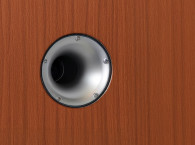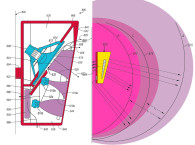Speaker Device
Patent Number: 9,288,561
Inventor: Walter Ka Wai Chu (Taoyuan, TW)
Assignee: Fortune Grand Technology, Inc.
(Taoyuan County, Taiwan)
Filed: May 29, 2015
Class: H04R 1/02
Granted: March 15, 2016
Number of Claims: 6
Number of Drawings: 4
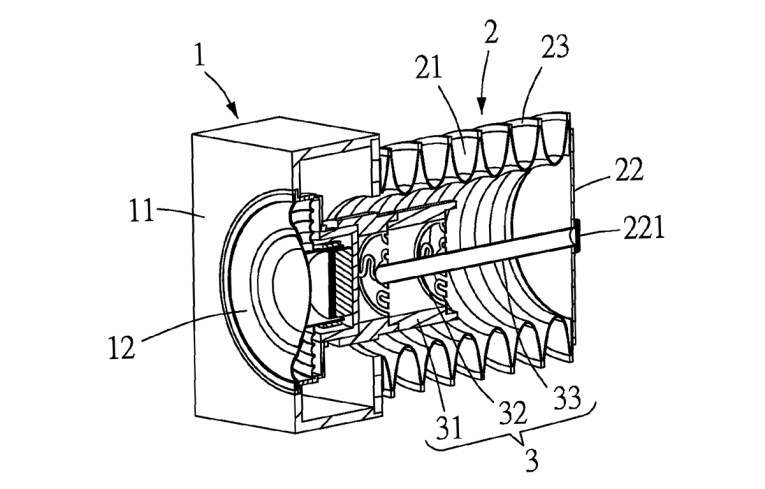
A speaker device includes a main cabinet composed of a cabinet body and a speaker mounted on the cabinet body; an extendable cabinet composed of a bellows tube and a passive diaphragm, the bellows tube having a front end communicably connected to the cabinet body and a rear end closed by the passive diaphragm, and the passive diaphragm being axially aligned with the speaker; and a damping assembly being arranged in the cabinet body and in the bellows tube, and having a front end connected to the cabinet body and a rear end to the passive diaphragm. With these arrangements, the speaker device can have improved bass performance in the entire low-frequency band instead of being limited to only a few low-frequency points.
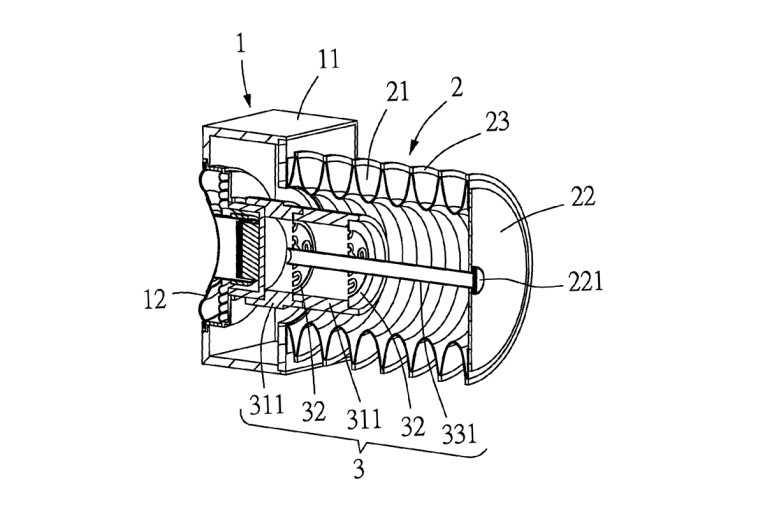
1. A speaker device, comprising: a main cabinet including a cabinet body and a speaker mounted on the cabinet body; an extendable cabinet including a bellows tube and a passive diaphragm; the bellows tube having a front end communicably connected to the cabinet body and a rear end closed by the passive diaphragm, and the passive diaphragm being axially aligned with the speaker; and a damping assembly being arranged in the cabinet body and in the bellows tube, and having a front end connected to the cabinet body and a rear end to the passive diaphragm.
Reviewer Comments
Disclosed is a loudspeaker enclosure system wherein the invention’s primary objective, as stated, is to develop a passive radiator-based speaker device that has an increase in low-frequency output across the entire low-frequency band as opposed to being limited to the narrow band around a single tuning frequency of a prior art passive radiator, the Helmholtz resonator system.
The invention’s structure includes a main enclosure body and a driver mounted on the enclosure, and an extendable enclosure portion composed of a bellows tube and a passive diaphragm. The bellows tube had an open first end communicably connected to the enclosure body and a second closed end. The passive diaphragm is axially aligned with the driver.
A rod and spider based centering assembly is arranged in the enclosure body and in the bellows tube, with a first end connected to the enclosure body and a second end connected to the passive diaphragm.
The bellows tube has circular reinforcing ribs mounted concentrically about the center of the tube, and acts as rigid separators of concentric compliant regions between the reinforcing ribs. The passive diaphragm, connected to the bellows tube and the internal stabilizing rod, which is connected to the internal centering spiders, form a type of compound passive radiator.
The patent states that, “Through different combinations of weight and smooth operation between the above-mentioned components of the speaker device, multiple sets of combination of weight and smooth operation are formed to interact with one another, enabling the resonance frequency to be distributed over the entire low-frequency band instead of being concentrated on only a few resonance frequency points. More specifically, with the present invention, the Q value, or the sharpness of resonance frequency, of a speaker device can be changed and reduced, so as to widen the effective range of the bandwidth of the resonance frequency. In contrast, in a conventional speaker device, the increase of the weight of the passive speaker can only make the resonance frequency to concentrate on a few points.”
The system is interesting, as it has an increased number of variables compared to a standard passive radiator device. However, the patent does not disclose any measurement data, or instructions for how to optimize the various elements or how they might relate to the driver’s Thiele-Small data.
Other than the cited quotation from the patent, the inventor does not explain the mechanism(s) involved in the distributed resonance. One could surmise that the bellows is formed of multiple compliances and each reinforcing rib adjacent each side of the individual compliant sections form coupled and decoupled masses.
There have been prior art attempts at multi-tuned passive radiators, with a single, flat passive radiator having multiple diaphragms, each decoupled by suspensions, but it tends to result in multiple low-Q resonances such that each one contributes to little output to be of significant addition to the total output.
There is no discussion of the output or phase of the compliant surface areas between each pair of reinforcing ribs of the bellows. These compliant regions tend to move in opposite phase to the passive diaphragm, operating in a fashion similar to a Heil Air Motion Transformer, “squeezing” the air out as the passive radiator moves inward, and pulling air in as the passive radiator moves outward.
The dimensions were not defined, but if you look at the drawings, you might surmise that the mobile, compliant regions of the bellows may have a total surface area similar to that of the passive diaphragm itself, much of the output of the passive diaphragm may be cancelled during excursions of the bellows system.
While I remain somewhat skeptical of whether, in its current disclosed form, the device will provide a useful advantage, this is one of those interesting system disclosures by an inventor that might or might not reach a valuable potential in its current form. I will definitely look forward to seeing what a fully optimized system of this architecture can deliver! VC
This article was originally published in Voice Coil, June 2016.



